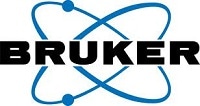In order to analyze mirocystins (MCs) in drinking water, an LC-MS/MS technique has been devised by direct injection on EVOQ Elite model triple quadrupole mass spectrometer. The technique is quite sensitive and can identify 0.05 ppb microcystins in water with improved reproducibility (RSD ≤ 10%, n=7), and with exceptional linear calibration range between 0.05 and 50 ppb.
.jpg)
Figure 1. EVOQ Elite
.jpg)
Figure 2. Structures of the cyanobacterial toxin Microcystin-LR and its other variants MC-RR and MC-YR from the replacement of the R and L residues
MCs are cyclic heptapep-tides that are generated by cyanobacterias, which occur in lakes and reservoirs rich with nutrients. MCs can be toxic to both humans and animals. A guideline of 1 µg/ has been set by the World Health Organization (WHO) in order to regulate MC-LR, which is a marker for cyanobaterias, in drinking water. This work illustrates an LC-MS/MS technique for detecting and quantifying three types of cyanobacterial toxins such as MC-LR, -YR, and –RR in drinking water through direct injection.
Experimental
Sample Preparation
Bruker purchased microcystin RR, LR and YR mixture (5 ug/mL in Methanol) from Sigma-Aldrich and used ultrapure water to dilute this mixture to prepare calibration standards ranging from 0.050 to 50 ppb.
Chromatography (Advance UHPLC)
- Column: ACE Excel 2 C18 (100x2.1 mm i.d)
- Injection volume: 50 µL
- Column temperature: 40 °C
- Flow rate: 0.4 mL/min
- Mobile phase B: Acetonitrile
- Mobile phase A: Water with 0.1% Formic acid
Gradient conditions:
- 0.00 min 30% B
- 1.00 min 30% B
- 7.00 min 95% B
- 7.10 min 30% B
- 10.00 min 30% B
Mass Spectrometer (EVOQ Elite)
- ESI: +4500 V
- Cone gas temperature: 200 °C
- Probe temperature: 350 °C
- Nebulizer gas: 50 units
- Probe gas: 50 unit
- Cone gas: 15 units
- Active exhaust: On
- Collision gas: Argon at 1.5 mTorr
Optimized MRM transitions:
- MC RR (MW: 1038): m/z 520 >135 (CE=24V)
- MC LR (MW: 995): m/z 498> 135 (CE=11V)
- MC YR (MW: 1045): m/z 523 >135 (CE=9V)
.jpg)
Figure 3. Full scan spectra of MCs
Results and Discussion
The MCs’ full scan spectra are differentiated by their doubly charged ions as shown in figure above. Owing to their high sensitivity, these ions were utilized as precursor ions for MRM technique development. As a result of cleavage of the methoxy group of the ADDA residue, the MCs share the common product ion of m/z 135. [PhCH2CH (OCH3)]+
The table given below outlines seven replicate injections of 0.05 ppb standard solution and the figure demonstrates the MC calibration curves between 0.05 ppb and 50 ppb, and shows remarkable linearity with R2>0.997.
Table 1. Repeatability of 0.05 ppb MCs
| |
MC-RR |
MC-YR |
MC-LR |
| Inj. #1 |
1246 |
300 |
478 |
| Inj. #2 |
1239 |
364 |
584 |
| Inj. #3 |
1396 |
340 |
620 |
| Inj. #4 |
1157 |
345 |
585 |
| Inj. #5 |
1166 |
339 |
527 |
| Inj. #6 |
1189 |
318 |
585 |
| Inj. #7 |
1147 |
384 |
487 |
| Average |
1220 |
341 |
552 |
| Std. Dev. |
87 |
28 |
55 |
| %RSD |
7.1 |
8.1 |
10 |
.jpg)
Figure 4. Chromatogram of 0.5 ppb mixed standard of MCs
.jpg)
Figure 5. Calibration of MCs
Conclusion
Using three orders of dynamic range (0.05 ppb -50 ppb) on an EVOQ Elite triple quadrupole LC-MS/MS system, microcystin-LR, RR and YR can be easily evaluated. The LC-MS/MS technique is capable of meeting the necessity for checking microcystins in drinking water.

This information has been sourced, reviewed and adapted from materials provided by Bruker Life Sciences Mass Spectrometry.
For more information on this source, please visit Bruker Life Sciences Mass Spectrometry.